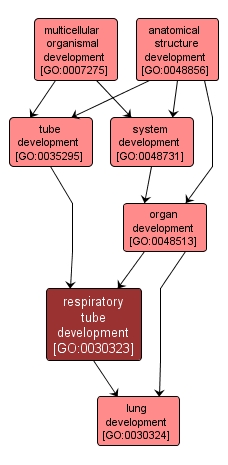GO TERM SUMMARY
|
| Name: |
respiratory tube development |
| Acc: |
GO:0030323 |
| Aspect: |
Biological Process |
| Desc: |
The process whose specific outcome is the progression of the respiratory tube over time, from its formation to the mature structure. The respiratory tube is assumed to mean any tube in the respiratory tract. |
|

|
INTERACTIVE GO GRAPH
|














